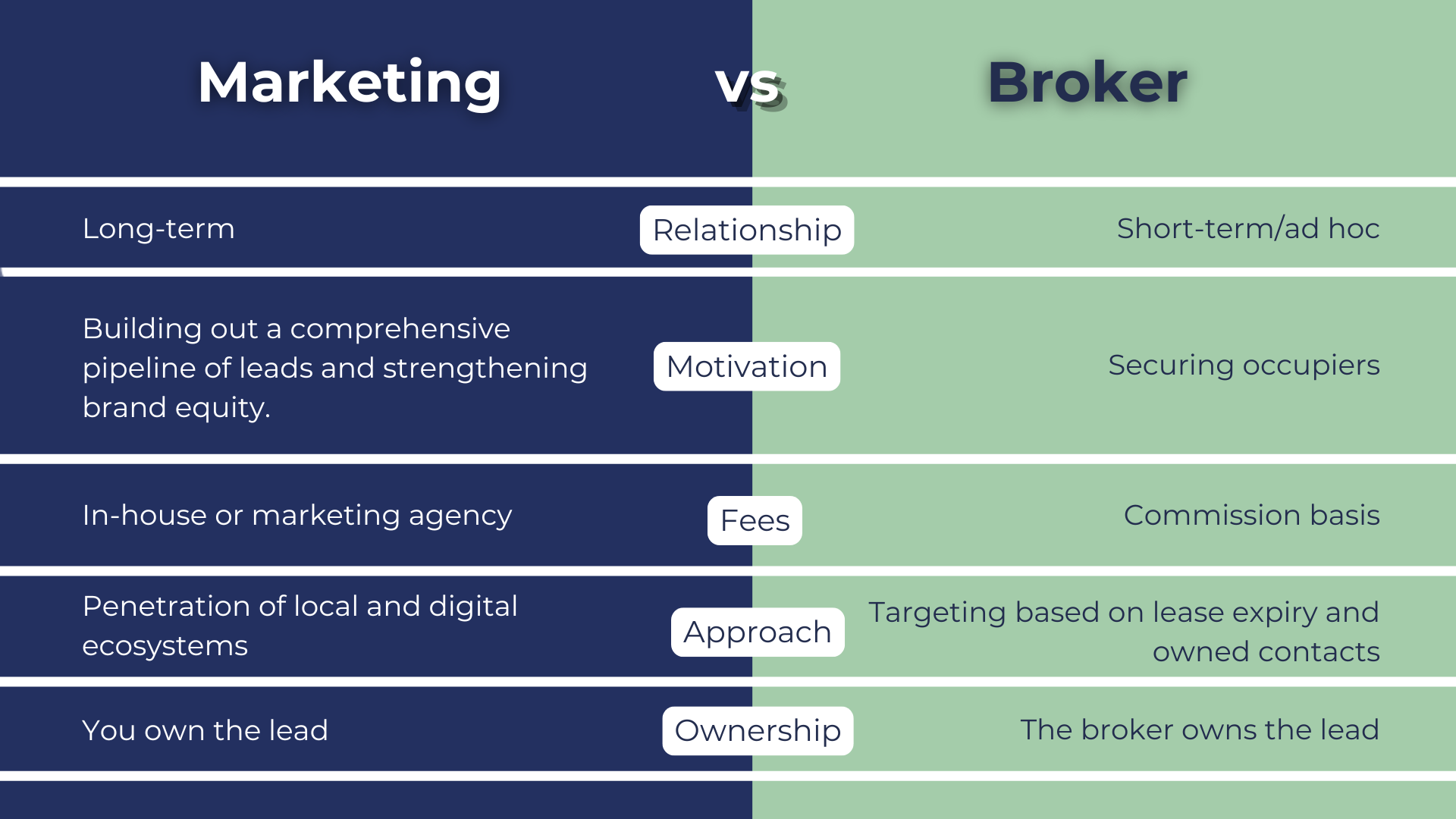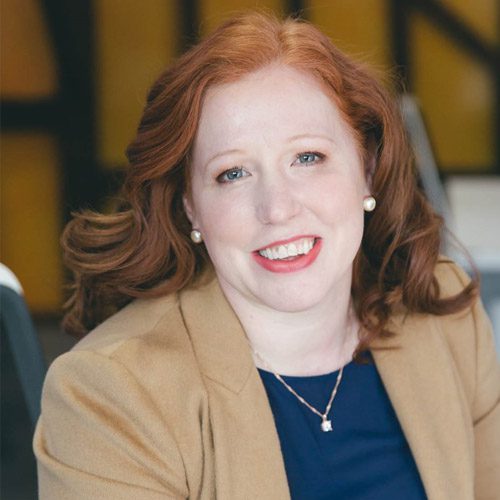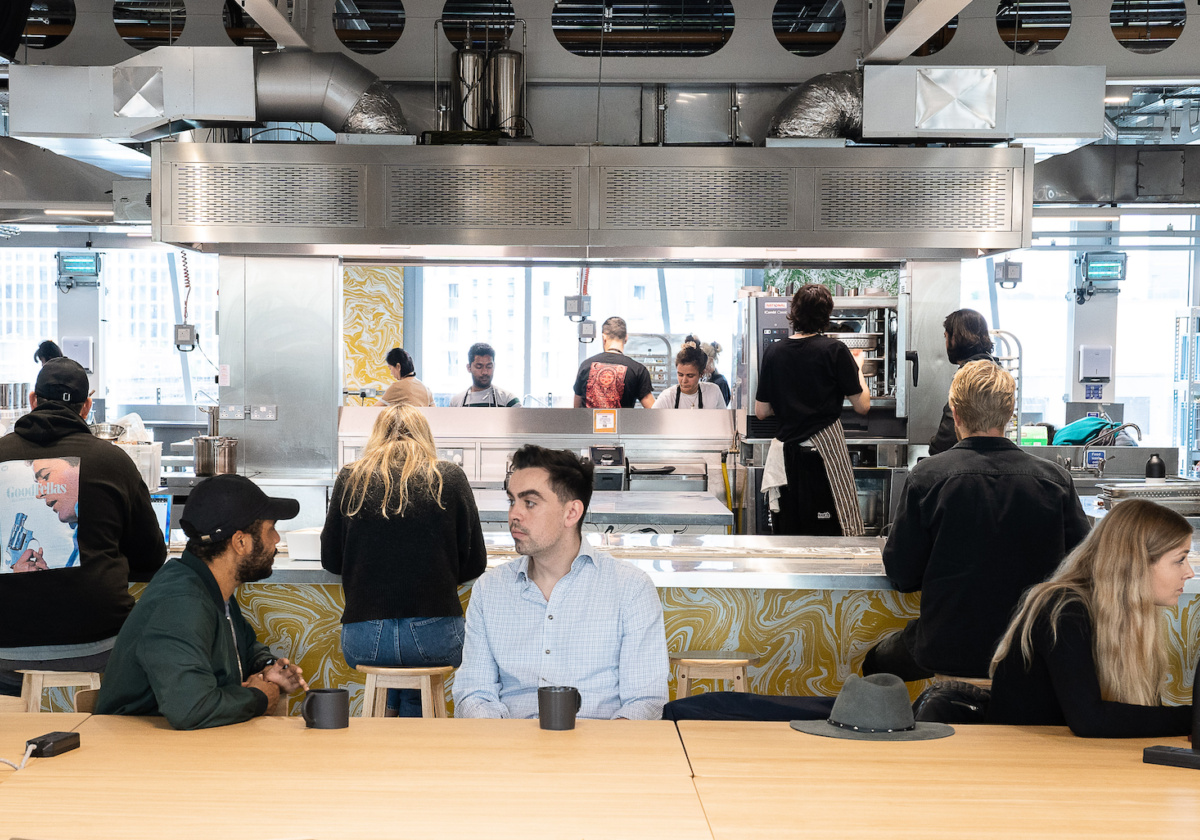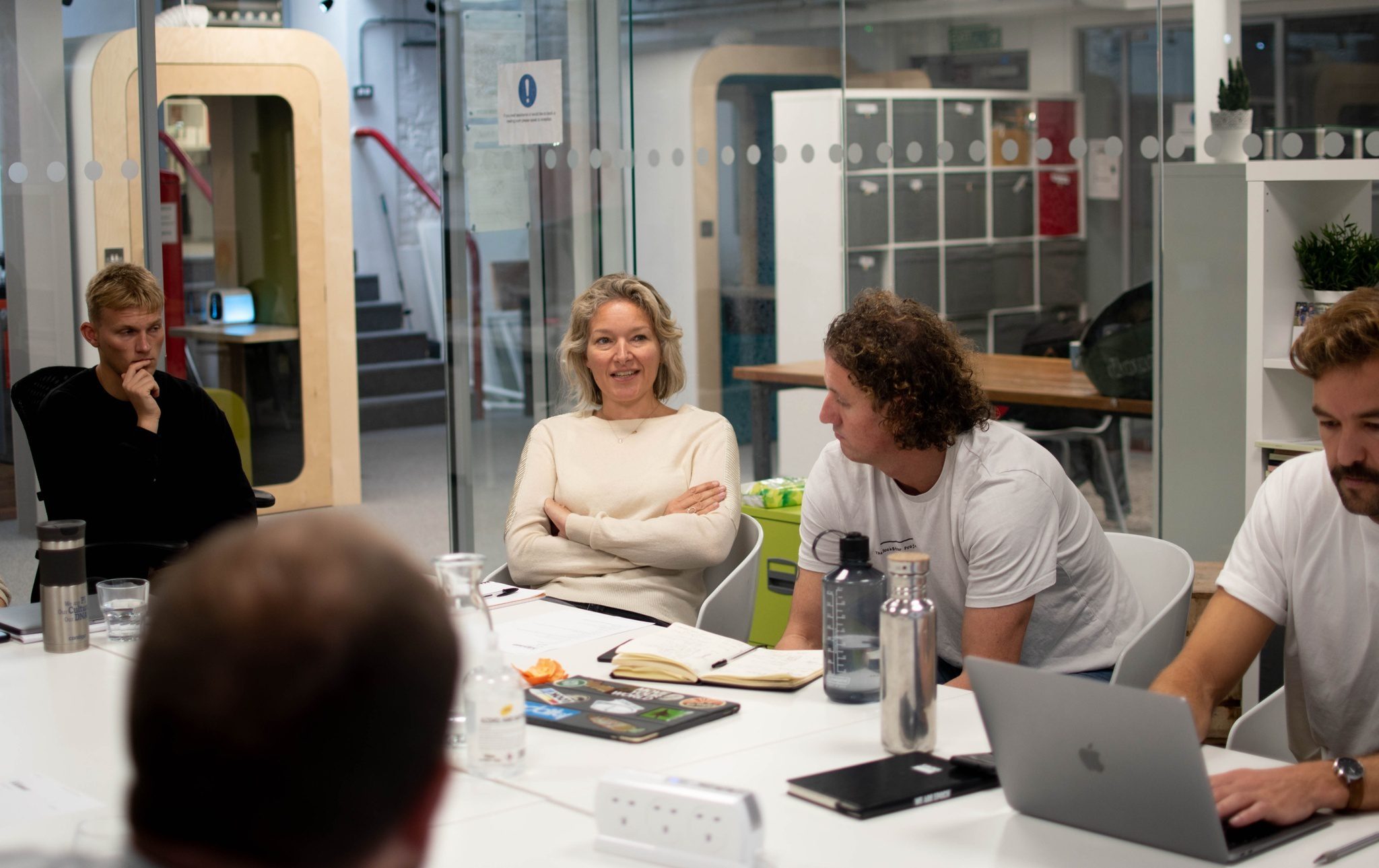Your Marketing Manual for a Business Centre, Serviced Office or Coworking Space


Table of contents (Click to jump to any section):





The flexible workspace sector is growing rapidly, which means there’s a lot of consumer demand for coworking spaces, but also a lot of competition. That makes marketing particularly important – to secure your slice of the market, you need to invest in growth.
Thankfully, flexible workspaces are exceptionally marketable. Since the market is relatively young, strong brand loyalty is rare. That means that winning business, for the most part, requires two simple steps: having a good product and getting it in front of the right people.
And there are many ways of getting in front of the right people – with a range of viable marketing channels spanning both digital and traditional arenas. With a long-term vision, consistent effort, and support from flexible workspace marketing experts, a coworking marketing campaign has the potential to be very lucrative.
Marketing your workspace
Conversion funnel
Marketing your workspace requires a thorough understanding of the established conversion funnel that can be used to drive users through the buying journey towards final conversion. This conversion funnel is, roughly, as follows:
- Generate leads – The first step is to actually identify, target, and capture leads. There are a wide range of channels through which leads can be targeted, and focusing on a healthy mix of them is generally the best strategy to ensure success. Regardless of which channel leads are being targeted through, however, they should all ideally be directed to the relevant page website or inputted into your CRM system.
- Website conversion – When leads have been directed to website, there are several conversion paths they can then take: booking a tour, filling in a contact form, sending an email, or calling directly. Booking a tour is the most direct conversion, as each of the other conversion types will likely lead on to this as a next step anyway.
- Nurture lead – After a lead has converted through the website, they will be in your hands. To avoid drop-off, leads should be nurtured. This means responding to enquiries promptly and pushing leads towards booking a tour. Once a tour has been booked in, nurturing then means making sure that the lead is reminded of their booking to increase the attendance rate.
- Convert – On the tour, all efforts should be made to convert the lead on the day. If a lead doesn’t convert, they should then be nurtured further through the established communication channel.
KPIs
It’s also important to be able to effectively measure the efficacy of a marketing campaign to understand how performance stacks up against expectations. This requires setting appropriate and insightful KPIs. For your locations, the following KPIs are generally advised – the monitoring of which provides valuable data about how well the strategy is working at each stage:
Channel-specific KPIs
Firstly, for each digital channel that is used to generate leads at the top of the funnel, it’s useful to measure top-level metrics such as:
- Clicks
- Impressions
- Average position
- Clickthrough rate
- Engagement
Website KPIs
Next, to assess the drop-off from leads that make it to the website, website metrics should also be measured. Good metrics to assess for website performance include:
- Retention (inverse bounce rate)
- Time on site
- Pages per session
- Conversion goals
Lead nurturing KPIs
From there, it’s essential to monitor drop-off throughout the lead nurturing stage. Data gathered covering where in the nurturing process leads drop off most can help you to understand how to improve the process and retain more of the leads you’ve already taken this far.
Monthly KPIs
In a more macro sense, there are some broad KPIs that you should use to benchmark your marketing activities each month. Some suggested KPI’s:
- Aim to secure 10 organic leads per month
- Send 80 new LinkedIn connection requests per month
- Post 4 new LinkedIn updates per month
- Attend 3 local networking events per month


Marketing vs Brokers
Brokers are a traditional source of leads for workspaces and offices. They typically provide a steady flow of leads in exchange for a fee. While useful in certain circumstances, such as to kickstart a new workspace’s revenue generation or to fill a short-term gap in occupation, they are generally a less efficient form of acquisition than constant marketing building local pipeline.




Lead Sources
SEO
Google is the first place many people turn for information, including when they’re trying to find a new workspace. SEO, or search engine optimisation, is the practice of optimising your website to appear in search results for the keywords that customers search when they’re looking for your product or service. In this case, when they’re looking for a flexible workspace.
SEO underpins the digital side of your location’s marketing strategy. It’s a long-term channel that can pay massive dividends if consistently invested in through content creation and optimisation, gradually growing to be the ultimate passive lead-generation tool.
PPC
PPC, or pay-per-click advertising, is another way to gain visibility on the world’s biggest information sources – search engines. Unlike SEO, however, PPC is a paid channel, meaning you pay for each click you acquire through it. Google Ads is by far the most popular PPC ad platform, and can expose you to the same users that you’d target through SEO, but with a fraction of the effort and in much quicker turnaround times.
PPC runs best in tandem with an SEO campaign, as the keywords targeted by each will have significant overlap. It’s a channel that’s perfect for short-term acquisition, whether you’re trying to fill desks quickly after opening or looking to smooth over a temporary shortfall in revenue.
Ads can be run independently for each location, targeting both geographic and generic keywords and with a highly flexible budget. An effective PPC campaign aims to provide tangible ROI in the form of capturing searchers and bringing them to the website, where they can then convert through contact forms or telephone details.
Social Media
Social media lead generation opportunities can be split into two categories – organic and paid. The differences between these mirror the differences between SEO and PPC – organic social is excellent for long-term sustained growth, and paid social is great for capturing leads in the short term.
There are many social media platforms to consider using, but your target market is generally concentrated on LinkedIn. Instagram is also worth pursuing, albeit with slightly less of a focus.
Organic social media activities focus on building an audience, gradually increasing engagement, driving traffic to the website, and pushing users to convert on-platform. Paid social media activities are more direct – usually leading directly to the website without the requirement to first grow the account.
PR
PR is an often-overlooked element of a comprehensive marketing strategy, but when utilised effectively, the PR channel can itself drive meaningful engagements while also complementing other channels.
The focus in any PR campaign should be to gain coverage in publications that have a high chance of attracting your target audience. Coverage can be gained in many different ways, from providing comments to tangentially-related articles to securing full self-written features or guest post opportunities. Consistently making use of press releases to publicise important announcements, such as the opening of your space, is also a great way to receive incidental coverage in industry publications.
But it’s important to remember that coverage in itself is not the aim – each PR opportunity pursued should provide a tangible benefit, whether that’s an influx of traffic from a mention in a news piece or a valuable backlink from a reputable industry source.
Local
Workspaces are, by their very nature, a local-focused service. That makes local marketing a critical element of the overall strategy. You can reasonably assume that a high percentage of your ideal users are either local themselves or searching for a workspace in your particular area. Local marketing seeks to target those users specifically.
Local marketing takes many forms, but the most important elements are effective setup and use of a Google My Business listing, presence on all major local directories, and pursuit of press coverage or backlinks from important local publications or authorities. There are also other local opportunities that can be leveraged for exposure, including building partnerships in your local business community and distributing promotional flyers.
The aim of local-focused marketing is to become a part of the local conversation and build your presence on all local-centric digital platforms. Investment in achieving this aim can have long-lasting positive effects, both online and off.
Direct
While the ideal long-term position to be in is to have 100% of your leads be inbound, and therefore largely passively acquired, that stage requires patience. Direct marketing, similarly to PPC advertising, is a highly effective short term solution, allowing you to generate interest and acquire leads through direct input.
Essentially, any form of direct interaction with your target market can be considered direct marketing. This includes reaching out on social platforms like LinkedIn, building mailing lists to nurture, hosting networking events at your location, and even organising a launch event.
Direct marketing is a manual way of filling the top of your sales funnel. Theoretically, the amount of time and effort put into this channel will be directly represented in the number of leads acquired.
Brokers
Although all of the above marketing efforts can and should be made to build a sustainable long-term lead generation machine and therefore avoid the need for utilising brokers, brokers can sometimes come in useful.
The most effective time to utilise brokers is in the early stages of running your workspace, when long term channels like SEO and social media are still building momentum. By directing brokers to pursue leads for office space pre-lets, before you’ve even launched, you can smooth the transition into operation and hit the ground running with offices already filled.


Go to market plan
Deploying a marketing strategy for your location requires a little bit of prior set up. This is the typical go to market plan for a Spaces to Places campaign:
Research
Any good marketing campaign should begin with a research element, ensuring that the strategy adopted is aligned with the addressable target market. Research takes the form of:
- Local demographic research to determine who your ideal customer is and how abundant they are
- Customer profile creation to solidify an understanding of personas you’re targeting and consolidate knowledge on how best to target them
- Keyword research to uncover search volume of relevant keywords and potential opportunities for SEO and PPC
Setup
Once research has been carried out, the next step is to set up all of the required platforms to ensure a marketing campaign can be smoothly deployed. This include:
- Creating a database for acquired leads – typically in a mail client or spreadsheet or your management system
- Setting appropriate KPIs for all chosen marketing channels to ensure that performance can be properly tracked
- Setting up relevant goals in Google Analytics and conversion tracking in Google Ads to help measure performance
- Creating a Google My Business Listing
Build/Implementation
With setup complete, the build process can begin, moving swiftly on to campaign implementation. This process includes:
- Creating the relevant page for the new location on your website
- Strategising a 6-12 month plan for all major channels, including Events, SEO, PPC, social media, and PR
- Building out all major campaigns, including ad group creation for PPC, blog post production for SEO, social media copywriting for LinkedIn, etc
- Going live with the campaign
Review and tweak
And, finally, it’s important that a campaign isn’t forgotten about as soon as it’s running. Constant reviewing of performance and regular tweaks to strategy, implementation, or intensity are required to get the most out of the campaign, and this should be informed primarily by data.
If you need any help with your workspace marketing?







About the Author
Zoe Ellis-Moore is a dynamic catalyst within urban development, renowned for her innovative approach to transforming spaces into vibrant, thriving places. Her accomplishments include pioneering the first Business Improvement District (BID) in the UK, managing portfolios for Leisure and Retail assets for Savills, Derwent London, and LandSec, and leading European marketing for Hotels, Retail and Industrial verticals with JLL.
As the visionary founder of Spaces to Places, Zoe redirected her focus to the flexible office sector in 2019. Here, she and her team provide strategic advice on market dynamics and brand elevation. From guiding investors on The Clubhouse London to transforming established operators like Worting House to new location launches with lead generation campaigns for multiple operators.
Furthermore, Zoe’s influence extends to strategic location expansions research for Clockwise and ongoing collaborations with The Boutique Workplace Company, Maidstone, and Devon County Council. This multifaceted engagement highlights her adaptability and unwavering commitment to growing the flexible office sector.



